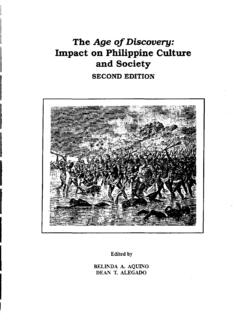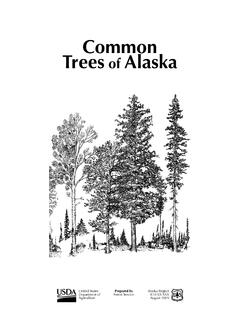Transcription of Understanding Treasure Signs and Symbols - Garrett
1 UnderstandingTreasure Signs and SymbolsCharles GarrettRam Publishing subsidiary of Garrett Metal Detectors1881 West State StreetGarland, TX 75042PN 1546000 ISBN 978-0-9818991-4-5 Treasure Signs and Symbols Garrett ram Master Treasure hunter and authorSings and Symbols 13/12/2009 12:07:25 PMCharles GarrettUnderstandingTreasure Signs and SymbolsFront cover photo: These boulders mark the location of a Treasure hidden by an Indian tribe in the Western United tribe hid its tribal wealth in a cave prior to a conflict with the federal government in the 1880s. They planned to recover the Treasure after the war. This is one of several Treasure markers examined in later years in this area. Remember, when searching for hidden Treasure Signs always search diligently for out-of-place markers.
2 See other such marker photos in this cover photo: Explorers often discover ancient Signs and Symbols such as these petroglyphs on this boulder. No one should ever deface such precious historical works of Signs and Treasure Signs AND Symbols Charles L. Garrett 2009 Manufactured in the United States of rights part of this book may be reproduced or transmitted in any form or by any means, electronic or mechanical, including photocopying, recording or by any information storage or retrieval system, except in the case of brief quotations embodied in critical articles and reviews. For information, address all inquiries to Editor, Ram Publishing printing: March 2009 Understanding Treasure Signs and Symbols 5 CONTENTSA bout the Author ..7 Introduction ..9 Early Treasure Signs .
3 11 Some Personal Experiences ..15 Interpreting Your Discovery ..25 Common Treasure Symbols ..29 Sun Distance and Measurement Symbols ..31 Arrows and Directional Symbols ..34 Compass Degree Symbols ..37 Treasure Direction Symbols ..38 Treasure Location Symbols ..42 Miscellaneous Symbols ..50 Turtle Signs and Symbols ..51 Snake Signs and Symbols ..53 Sample Tree Markings ..55 Moon Symbols ..56 Time Markings and Symbols ..57 Danger Symbols ..58 Crosses and Religious Symbols ..60 spanish Treasure Terms ..62 Special Advice ..66 Other RAM Books .. Charles Garrett , seen on one of his expeditions through Arizona, regards Treasure Signs and Symbols in the field as road-maps to old Treasure Signs and Symbols 7 ABOUT THE AUTHOR For more than 45 years, Charles Garrett has pioneered the development of the modern metal detector, demonstrated its capabilities in search-es throughout the world and devoted himself to teaching others to use detectors.
4 He has recovered treasures of all types while searching all over the world. Garrett has encountered various Treasure Signs and Symbols in the field, some the ancient pictoglyphs of Native Americans and others such as age-old symbology of spanish people. The author s lifetime interest in Treasure hunting prepared him to excel in that field. After earning a Bachelor of Science Degree in Electrical Engineering, Charles Garrett worked at Texas Instruments and Teledyne Geotech develop-ing systems and equipment required by America s fledgling space effort. While devoting himself to his hobby, he designed and built his own metal de-tectors. This avocation became a career when he and his wife, Eleanor, founded Garrett Electronics in 1964 to manufacture and market his Garrett quality is praised today throughout the world.
5 From the beginning, Garrett vowed to practice what I preach by field-testing his equipment to insure that each detector works for customers regardless of ground conditions and en-vironment. He has become recognized as an unof-ficial spokesman for the hobby of Treasure hunting and the metal detecting industry through a long list of honors, personal appearances and books. This book on early Treasure Signs and Symbols marks the latest installment in Charles Garrett s pocket-sized Treasure hunting field guides. He is devoted to disseminating such knowledge in a format that is both convenient and effective for helping individuals recover more Treasure with their metal Treasure Signs and Symbols 9 INTRODUCTION I am excited to release this fifth volume in the Garrett Treasure -hunting field guide series because Treasure Signs and Symbols have always been a great fascination of mine.
6 I have encountered these marks during my many years in the field and can say with experience that Understanding them can truly help you uncover great riches, just as it has helped me. Many of these early guides to Treasure in the West originated from Native Americans of North America and Spaniards exploring their new land. The use of such field markings actually dates back to the beginning of mankind. Cavemen painted on cave walls with charcoal sticks. Early Europeans designed special crests or family Symbols . Ancient civilizations around the globe created their own Symbols for com-munication, identification and education. As people hid things of value, they cre-ated Treasure Symbols to help guide them back to their Treasure trove later or to enable them describe the location to others.
7 Pirates and outlaws used Signs and Symbols to mark their buried booty. The outlaw Jesse James carved a particular J into trees to pinpoint his caches. One such Jesse James symbol on a section of tree that was removed and sent to me is cur-rently on display in Garrett s Treasure museum in Garland. There are far too many Symbols and com-binations of them to fully cover in this book. I will, however, present basic Symbols , key Signs and words that you may encounter in your quest for Treasure . You should learn to properly inter-pret these Symbols after you find them in order to be successful. Your final step in recovering an old cache is to use a high-quality metal detector that can help you pinpoint the coveted Treasure . I trust that this book will become another valuable tool in your Treasure -hunting arsenal.
8 I ll see you in the Garland, TexasUnderstanding Treasure Signs and Symbols 11 EARLY Treasure Signs Man has always concealed his treasures and other valuable possessions. People hid riches, food, weapons or even sacred burial sites. In many cases, such possessions were stored in remote caves, on mountainsides, under rock outcroppings or near some geographic land-mark that could later be recognized. In order to relocate their caches or describe their location to others, individuals marked the landscape to guide them back to their stash. In some cases, this was accomplished by stacking rocks in a particular manner. Native Americans often bent young trees and tied them off so that they would continue to point in a particular direction as they matured.
9 Such early monuments and trail markers were meant to ap-pear natural to the casual passer-by. But those who knew what they were looking for found trail markings as good as a modern road map. Early tribesmen, Mayans, Incas and Aztecs used pictographs and petroglyphs to help them remember where they concealed their precious Hernan Cortes and the early spanish explorers were wise to learn the Indian Symbols and soon adapted some of them with span -ish variations. Some of the Indian tribes were reported by the spanish to display vast amounts of gold, silver, pearls and jewelry some of which was doubtlessly cached away and never recovered. Such riches were hidden after the Indians learned that Spaniards were willing to kill them for their precious possessions. Numerous other cultures including span -iards, Mexicans, Egyptians, Romans, Greeks and Phoenicians also left cryptic Signs and Symbols as guides to their concealed items.
10 These pictorial guides were carved into trees, etched or painted onto rocks or printed on animal skins or maps. Pirates, bandits and pros-pectors adopted many of the same emblems. Symbols have even been used to help people survive. In the era of the Great Depression in the United States, hobos left special Symbols to mark places that provided their greatest Treasure life-sustaining food. Special marks denoted where a generous person lived or the Understanding Treasure Signs and Symbols 13location of a business that might offer a hand-out. Hobos even made Symbols to warn their companions of a mean dog or other menaces. Those hiding Treasure caches certainly did not want to make them easy to find, so one sym-bol might lead the searcher to a spot where a second symbol or map could be found.








